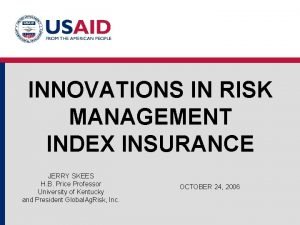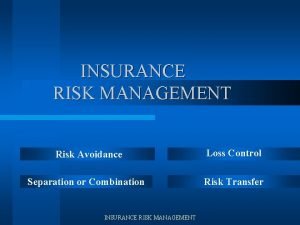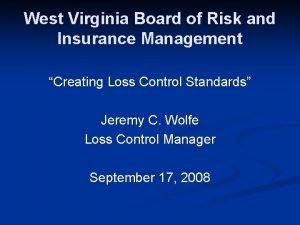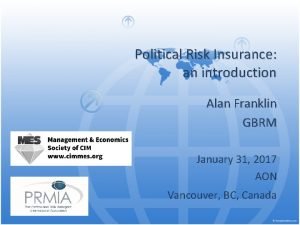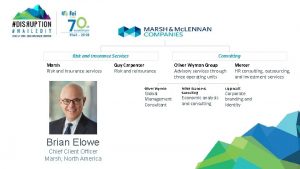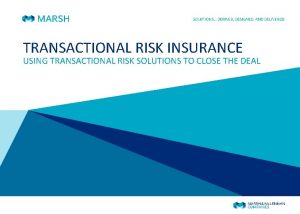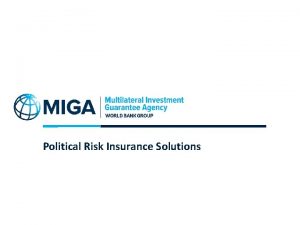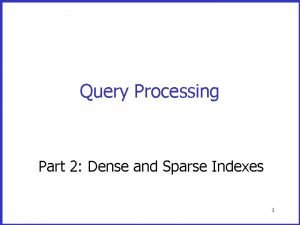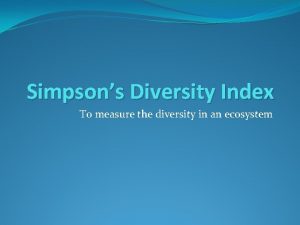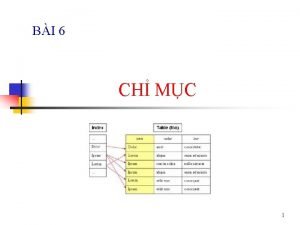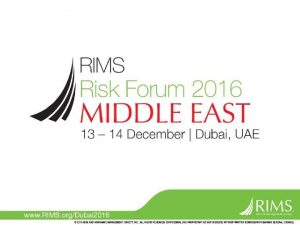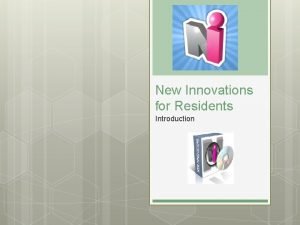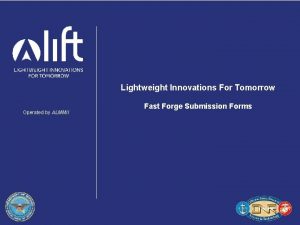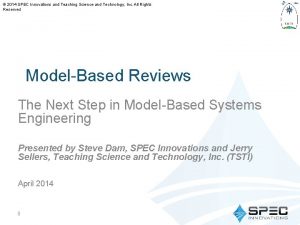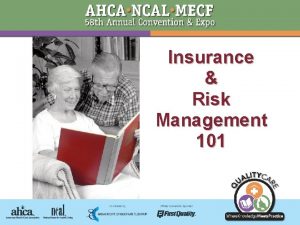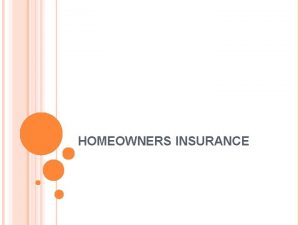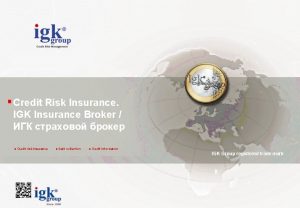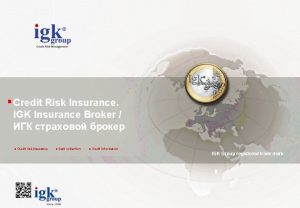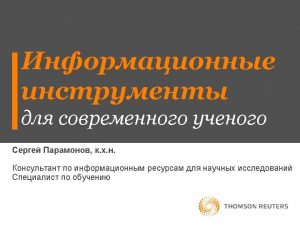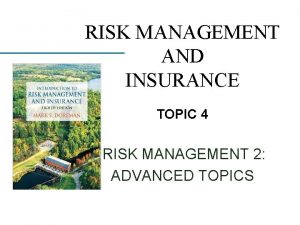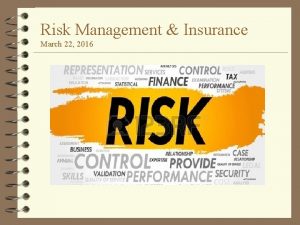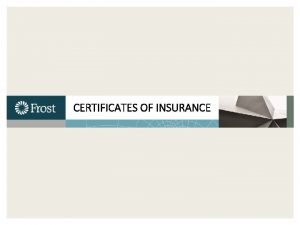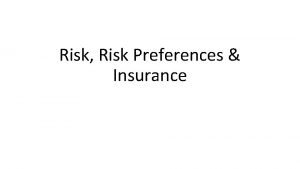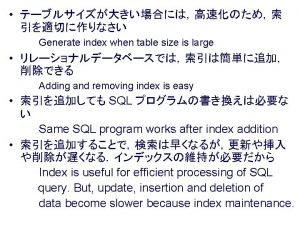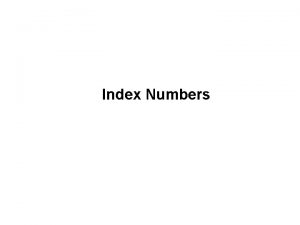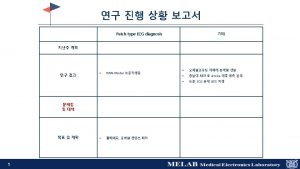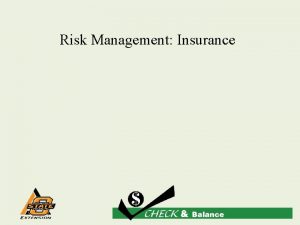INNOVATIONS IN RISK MANAGEMENT INDEX INSURANCE JERRY SKEES











































- Slides: 43

INNOVATIONS IN RISK MANAGEMENT INDEX INSURANCE JERRY SKEES H. B. Price Professor University of Kentucky and President Global. Ag. Risk, Inc. OCTOBER 24, 2006

Development, Livelihoods, and Risk l Risks can impact the asset position, ability to generate income, and creditworthiness of households, businesses, and governments, slowing development. l High transaction costs limit access to financial services and global markets, resulting in suboptimal risk-coping strategies. l Agricultural activity still dominates the livelihoods of many rural poor in low income countries — agricultural activity is exposed to a wide range of risks.

Agricultural Risk Identification Risk is experienced at different levels due to specific events such as low prices and adverse weather. Risk Experienced By. . . L MICRO Individual Households MESO Market Intermediaries and Local and Regional Governments MACRO National Governments and International Organizations E V E L

Poverty Traps Created by Severe Events l A minimum asset base is necessary for households to invest in education, accumulate assets, and improve economic well-being. l Rapid onset shocks can knock households below this minimum asset threshold, resulting in a poverty trap. l Slow onset shocks can also result in poverty traps depending on the coping strategies available to and chosen by households.

Poverty Traps and Responses to Events l Households sell assets to maintain minimum levels of consumption — this in turn reduces future streams of income; or l Households reduce consumption to protect assets — this can impact the human capital needed to generate future income streams.

A Hurricane’s Impact on Asset Trajectory shock recovery Assets better-off HH poorer HH poverty-trap threshold Time Source: Carter, Little, Mogues, and Negatu 2005

One Reason Poverty Traps Persist — Lack of Rural Finance Markets Well-Developed Rural Financial Markets Saving and Insurance occurs before the event occurs Borrowing can be a response after the event occurs Delivering banking and insurance services is expensive — cost is largely fixed making access to small and poor households even more difficult Savings Borrowing Insurance

Strategies for Risk Coping TIME FRAME Event Occurs EX ANTE EX POST Before the Event After the Event DROUGHT STRATEGIES INFORMAL Individual or Community-based FORMAL INFORMAL Market or Policy-based Individual or Community-based Market or Policy-based

Independent versus Correlated Risk l Independent risks are insurable because they are unrelated and generally impact different people at different points in time. l Correlated risk (i. e. , commodity price risk) affects a group of people in a region or multiple regions at the same time to a similar extent. l Most weather-related events and natural disasters are “in-between” risks, neither perfectly correlated nor independent, resistant to traditional insurance pooling.

Markets for Different Types of Risk 0% No Correlation Auto Accidents 100% In-between Risk Natural Disasters Correlation Commodity Prices Rainfall / Crop Yields Insurance Markets Futures Markets

High Probability Low Consequence versus Low Probability High Consequence Risks ility b a b o Pr isks R e High c quen e s n Co Low lly enera hat g t s t n g eve n i c erate u d d o e r m lt in ild to u Yields m e r r e n und s ofte er n m o r i occur t a i f d l n ividua er co d h t n i a e e w ich th h w s losse age. n a m can versus Low Pr obabili ty High C onsequ ence R isks Extreme weather events c in low yie an result lds. The likeli hood of such eve normally nts is ignored b y produc Insurers ers. , on the other ha or “load” nd, adjus premium t rates to uncertain c a pture ty surrou nding the occurren ce of suc h events producin , g a wedg e betwee buyer’s w n the illingnes s t o and the pay seller’s p rice.

What Can be Done? — Risk Management l A major challenge for low income countries is to develop an appropriate risk management framework to address these concerns. l This framework must be designed to manage correlated risks that accompany many low-probability, high-consequence events. l An effective risk management strategy should mitigate risk at the micro, meso, and macro levels.

What are the Benefits of Risk Management? An appropriate risk management framework l Avoids depletion of assets l Encourages investment l Enables more efficient use of resources l Permits effective financial design l Provides timely and efficient aid l Improves the targeting of vulnerable households l Clarifies the roles of the public and private sectors l Enhances safety nets l Facilitates more efficient country-level risk management strategies

Examples of Support for Risk Management in High Income Countries l The United States and Canada have heavily subsidized crop and revenue insurance programs. l Spain also provides government-supported crop insurance using a different model

Income Support and Risk Management in High Income Countries Government-supported risk management programs of high income countries l are expensive and not sustainable l distort production decisions l may be inconsistent with WTO agreements l are difficult to implement l favor large farms

Examples of Government-Supported Crop Insurance Presently there are few examples of successful models Financial performance of crop insurance Country Period (A+I)/P Brazil 1975– 81 4. 57 Costa Rica 1970– 89 2. 80 Japan 1985– 89 2. 60 Mexico 1980– 89 3. 65 Philippines 1981– 89 5. 74 USA current 4. 00 Source: Hazell, 1992 Condition for sustainability (A+I)/P < 1 Where A = average administrative cost I = average indemnities paid P = average premiums paid

Traditional Problems Adverse selection The most risky farmers buy Less risky farmers stay out Moral hazard People change their behavior after they are insured: their risk is greater

Pricing Insurance Price of insurance = Cost of the risk + Cost of information to control adverse selection + Cost of monitoring to control moral hazard + Cost of loss adjustment + Cost of delivery + Cost of ambiguity of risk + Cost of ready access to capital to pay for all losses 0 500 1000 2000 3000 4000 Index insurance should have lower administrative, lower ambiguity risk, and lower adverse selection and moral hazard than traditional insurance

Challenges for Insurance Markets Fiscal constraints l l Limited government resources High opportunity costs of government funds Structural constraints l l Smaller farm size High administrative costs Market constraints l l l Underdeveloped financial and insurance sectors Lack of access to international financial markets Small volume of business Informational constraints l l Data Education Institutional constraints l l Weak regulatory environment Lack of contract enforcement

Yield, and Disaster Risk Management in Low Income Countries — The Challenge To develop cost-effective risk transfer instruments that do not distort incentives and that address the needs of participants at the micro, meso, and macro levels, while recognizing the country’s unique constraints.

Framework for an Innovative Risk Management Approach — Use of Market-based Instruments 1. Understand existing risk-coping strategies 2. Emphasize ex ante rather than ex post solutions 3. Focus on risk layering risk retention risk transfer 4. Focus on risk assessment at the micro (households) meso (intermediaries) and macro (national and global participants) levels

Index Insurance Pays for losses based on an independent and objective measure that is highly correlated with losses l Extreme rainfall events l Freeze l Crop yields by area (US – GRP county) l Mortality rates by county (Mongolia)

Index Insurance for Extreme Rainfall in India Payments would occur anytime rainfall exceeds 2000 mm A Bank might buy US$1 million liability For every 1 mm = pay $1, 000 0 500 1000 2000 3000 4000

Pre-conditions for Index Insurance For Weather Risk l Weather event must create correlated losses l Index must be a good proxy for loss l Event must be observable and easily measured l Third party should be involved in the measurement l System must be objective and transparent l Historic data must exist to price the risk

Traditional Crop Insurance versus Weather Index Insurance — A Cost Comparison rance u s n I p nal Cro o i t i d a r T Costs Higher actual r o f n o i pensat m o C l lection l losses e e s v e e l s r e farm nd adv a d r a z ral ha tion — a m l Mo r o f c in mmetri ve superior y s A l l risks ha e v s r e l e c m u r Prod bout fa d a e g d cted an a r t o r knowle p cess is o r p t u yo l Pa tive Risks t n e d subjec n e r Indep o f e l b ita l Su rnment e v o g lies on l Re pport u s l a i c finan versus Index-ba sed Weat her Insur ance Lower Co sts l Measu rable weather ev ent is a proxy for cr op losses, e. g. , rainfall l Limits moral haza rd and adve selection rse l Objecti ve triggers and structu for payouts red rules l Faster claims settle ment l Suitab le for correla ted risks l More s ustainable because of financing market

Applications of Index Insurance Index insurance can be sold to: l Individual farmers (US, Canada, India, Brazil – area yield insurance / India – rainfall insurance (250, 000) l Microfinance / rural banks (Peru – COPEME) l Importers for famine relief (WFP – Food security) l Governments for disaster aid (Mexico- Fonden) l Herders based on livestock deaths in an area (Mongolia – 2, 400 herders purchased) l Irrigators in a irrigation valley (Mexico IDB project) l Agribusinesses (who are at risk- when their farmers have cash flow problems) l Traditional crop insurance providers to serve as localized reinsurance


The Importance of Risk Aggregation When Using Market-based Risk Transfer Instruments Small households may not be able to use risk transfer instruments directly. Weather insurance relies on proxies that do not eliminate basis risk. Intermediaries may be needed to aggregate the risk to: l Mitigate basis risk l Reduce transaction costs l Strengthen the negotiation position

Benefits of Ex Ante Market-based Risk Management l Opens the way for innovation at the micro, meso, and macro levels l Improves access to risk transfer by the rural poor l Mitigates the impact of shocks that thrust the poor back into poverty traps l Strengthens locally based intermediaries offering market access to households of different income levels in low income countries l Allows for more efficient risk transfer at the macro level through greater risk retention at the country level l Creates a better environment for investment

Layering Risks for More Efficient Transfer l For frequent and low consequence risk, those exposed should absorb the risk using savings and loans. l For less frequent, but moderate consequence risks, market instruments should be used. l For less frequent, but high consequence risks, the government and broader international community may have a role.

Risk Segmentation — Sample Rainfall Distribution Showing Layering of Excess Rainfall Risk by Rainfall Levels Frequent Less Severe Risk, Independent Losses Self-Retention Layer Less Frequent, Moderate Risk Market Risk-Transfer Layer Correlated Losses from Excess Rainfall Market Failure Layer 0 500 1000 1500 2000 2500 3000 3500

Easing Financial Constraints l l l Market-based risk transfer — using insurance and reinsurance Pooling and transfer of risk whereby government facilitates risk pooling among companies within the country and then sells the tail risk to the global reinsurance markets Government packaged risk transfer — government contracts that can be auctioned or sold to insurers of reinsurers Government subsidies on only the most extreme risks Premium subsidies — to be avoided due to cost and poor incentives

Linking Index Insurance to Loans l Informal — farmers who get payments that they don’t need could loan to farmers having more serious loss l Formal but with simple structure — Rural finance entity will lower interest rates with the index insurance l Formal with contractual structure and loan officer involvement

Peru Project To develop a risk transfer contract that would allow MFIs in Peru to insure their agriculture-related loan portfolios against the risk of financial losses associated with catastrophic weather events

Operational Considerations l End User l MFIs l Operational l Primary in Peru l Financing l Global Reinsurer l Technical l USAID project l Regulatory l SBS — Banking and Insurance

ENSO Insurance in Peru l l l MFIs are growing in Peru MFIs pool risk by the nature of their business Correlated losses from El Niño are an obstacle to the development of sustainable insurance and financial markets Major weather events will increase the default rate of loans made by MFIs This source of risk reduces agricultural lending

ENSO Insurance in Peru l Severe rains and floods associated with El Niño are the economically most significant catastrophic risk in Piura l Index insurance based on rainfall measured at local weather stations is sensible, but has some problems Available rainfall data are limited and incomplete l Rainfall stations must be secure and reliable l Rainfall stations should comply with World Meteorological Organization standards to attract private sector insurers l

Impact of El Niño l MFIs reduced agricultural lending after 97/98 El Niño l MFIs continue to restrict agricultural lending if El Niño is expected (or suspected) l 97/98 El Niño brought an end to the agricultural insurance program and insurance premiums

Portfolio Risk in Piura Increased Due to El Niño

Benefits of Risk Transfer l Real cost associated with debt restructuring l Real cost associated with regulatory requirements for provisioning when repayment is in the arrears l Real liquidity problem as depositors also withdraw savings during this harsh time

ENSO Insurance Pilot in Piura l Prototype insurance based on El Niño Southern Oscillation (ENSO) 1. 2 index l ENSO 1. 2 measures sea-surface temperatures off the coast of Peru as deviations from normal – index is positive if temperatures are above normal, negative otherwise l ENSO 1. 2 indices are normally between -2 and 2 l Values above 2 are an indicator of a strong El Niño

Progress on ENSO Insurance l Support from the regulator (SBS) to classify this as ENSO Insurance. l There is a willing global reinsurer that is ready to underwrite the ENSO Insurance l Discussions with MFIs in Piura have advanced a good deal to enhance their understanding of how to use the ENSO Insurance l Linking reduction of provisions to index insurance as a form of ‘warranty’ BASEL II

THANK YOU Please visit www. microlinks. org/afterhours for seminar presentations and papers Jerry Skees jerry@globalagrisk. com
 Jerry skees
Jerry skees Northern california grantmakers jobs
Northern california grantmakers jobs Market risk credit risk operational risk
Market risk credit risk operational risk Risk separation
Risk separation Wv board of risk and insurance management
Wv board of risk and insurance management Wharton mdp
Wharton mdp Fire insurance contract
Fire insurance contract Fiduciary investment risk management association
Fiduciary investment risk management association Risk map
Risk map Alan franklin
Alan franklin Marsh risk & insurance services
Marsh risk & insurance services Yem mai marsh
Yem mai marsh Avoidance risk
Avoidance risk Nature of risk management
Nature of risk management Sarvesh suri miga
Sarvesh suri miga Non-deferrable expenses definition
Non-deferrable expenses definition Diff between step index and graded index fiber
Diff between step index and graded index fiber Primary index is dense or sparse
Primary index is dense or sparse Leprosy
Leprosy Limitations of pqli
Limitations of pqli Fibers
Fibers Simpsons evenness
Simpsons evenness Consistency index
Consistency index Clustered index và non clustered index
Clustered index và non clustered index Risk exposure index
Risk exposure index Rmi risk of malignancy index
Rmi risk of malignancy index Dr nirali patel
Dr nirali patel Jugulovenous
Jugulovenous Aon risk maturity index
Aon risk maturity index Russian empire architecture 1450 to 1750
Russian empire architecture 1450 to 1750 Newinnovations login
Newinnovations login Lsuhsc new innovations
Lsuhsc new innovations Lucent technologies bell labs innovations
Lucent technologies bell labs innovations Innovation foresight
Innovation foresight Ict innovations for business
Ict innovations for business Lesson 4 cultural innovations
Lesson 4 cultural innovations Why did muslims honor calligraphers above all other artists
Why did muslims honor calligraphers above all other artists New innovations duty hours
New innovations duty hours Next level innovations
Next level innovations Marketers classify innovations based on their
Marketers classify innovations based on their Almmii
Almmii Muslim innovations and adaptations
Muslim innovations and adaptations Innovations in modern banking
Innovations in modern banking Spec innovations
Spec innovations
